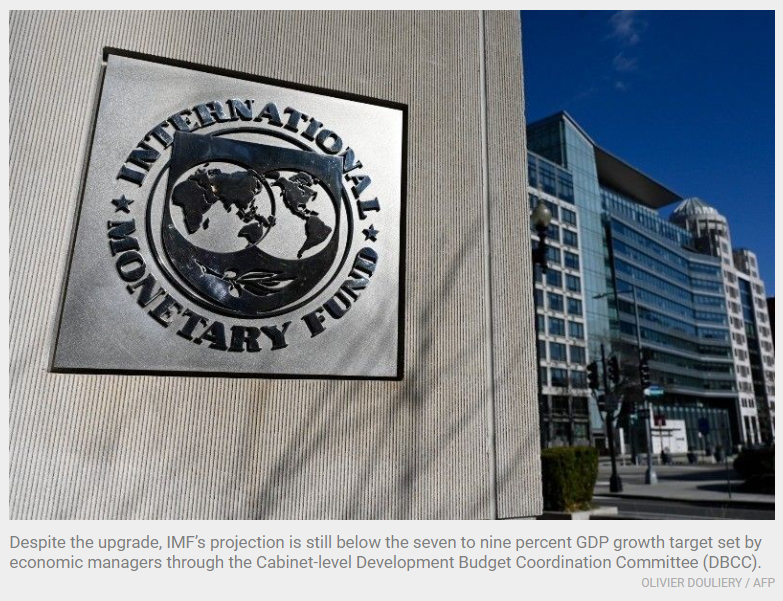IMF raises Philippines 2022 growth target to 6.5%
MANILA, Philippines — The International Monetary Fund (IMF) has raised its 2022 gross domestic product (GDP) growth forecast for the Philippines to 6.5 percent from the original target of 6.3 percent, making the country the fastest growing economy among members of the Association of Southeast Asian Nations-5 (ASEAN-5).
Based on the April 2022 World Economic Outlook (WEO), the Philippines’ GDP expansion is faster than the 5.3 percent average of the ASEAN-5: Vietnam’s six percent, Malaysia’s 5.6 percent, Indonesia’s 5.4 percent and Thailand’s 3.3 percent.
Despite the upgrade, IMF’s projection is still below the seven to nine percent GDP growth target set by economic managers through the Cabinet-level Development Budget Coordination Committee (DBCC).
The Philippines emerged from recession with a GDP growth of 5.7 percent last year after shrinking by 9.6 percent in 2020 when the economy stalled due to the impact of strict COVID quarantine protocols and lockdown measures.
The economy continues to reopen as the National Capital Region and nearby provinces shifted to Alert Level 1 after being placed under Alert Level 3 in January, as COVID infections hit daily record levels due to the highly transmissible Omicron variant.
The IMF lowered the GDP growth projection for ASEAN-5 by 0.3 percentage points to 5.3 percent for this year and by 0.1 percentage points to 5.9 percent for next year.
For 2023, the IMF sees the GDP growth of the Philippines stabilizing at 6.3 percent.
It also expects inflation to accelerate to 4.3 percent this year before easing to 3.7 percent from 3.9 percent in 2021. The consumer price index (CPI) continues to rise amid soaring global oil prices due to Russia’s invasion of Ukraine.
Last month, inflation hit the upper end of the two to four percent target range set by the Bangko Sentral ng Pilipinas (BSP), averaging four percent in March from three percent in February. This brought average inflation to 3.4 percent in the first quarter of the year.
Despite upward inflationary pressures, the BSP has maintained an accommodative policy stance to allow the economy to fully recover from the impact of the global health crisis.
BSP Governor Benjamin Diokno maintained that the Monetary Board is likely to keep a loose and expansionary monetary policy stance in the first half by keeping the benchmark interest rate at an all-time low of two percent.
Diokno earlier said inflation is likely to remain elevated and settle above the government’s two to four percent target band in the second half due to higher global oil and non-oil prices before easing in the first quarter of next year.
Based on its assessment last March 24, the Monetary Board raised its inflation forecasts to 4.3 instead of 3.7 percent for this year and to 3.6 instead of 3.3 percent for next year.
It also raised its Dubai crude oil price assumptions to $102.23 per barrel instead of $83.33 per barrel for 2022, and to $88.21 per barrel instead of $75.69 per barrel for 2023.
The IMF said global economic prospects have worsened significantly since the last WEO released in January, prompting the multilateral lender to slash its global GDP growth forecast by 0.8 percentage points to
3.6 percent this year and by 0.2 percentage points to 3.6 percent next year.
“This report projects global growth at 3.6 percent in 2022 and 2023 – 0.8 and 0.2 percentage points lower than in the January forecast, respectively. The downgrade largely reflects the war’s direct impacts on Russia and Ukraine and global spillovers,” the IMF said.
Source: https://www.philstar.com/business/2022/04/20/2175312/imf-raises-philippines-2022-growth-target-65


 English
English




